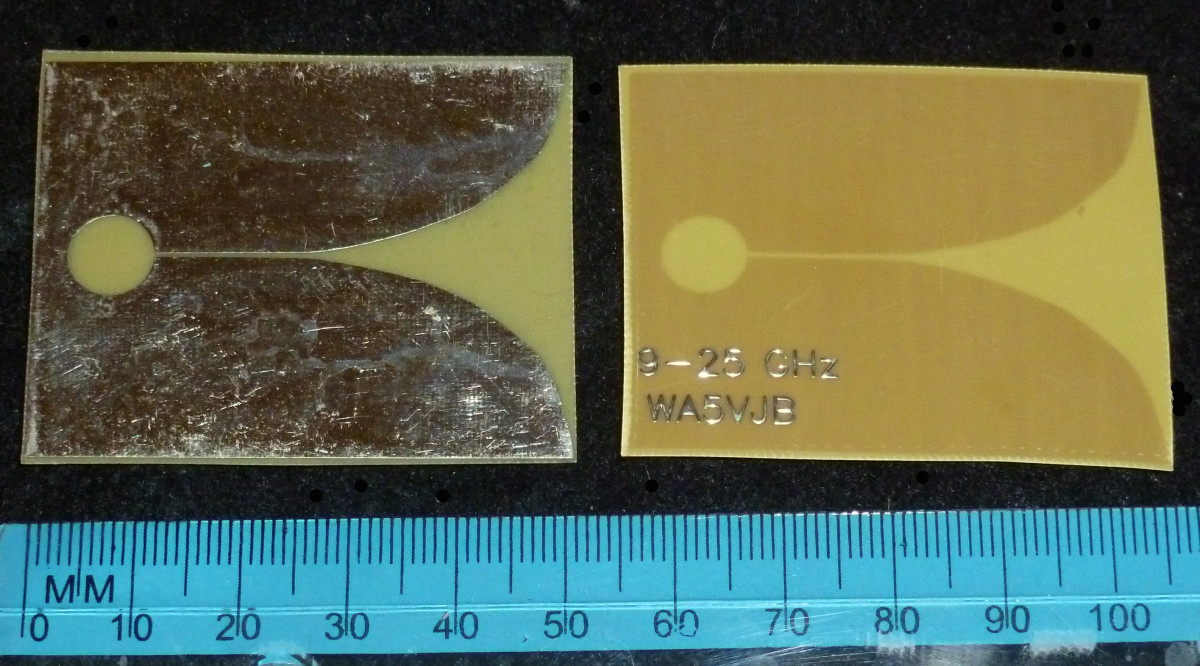Frequency Range
Inmarsat systems run at 1626.5 MHz. Inmarsat systems interfere with Iridium satellite radio because Inmarsat tends to put out far more power. You could use a basic 850-6500 MHz log periodic antenna to receive Inmarsat signals. The SpaceX Starlink system has been approved to operate at the following frequency ranges:
0.7-12.7 GHz, 12.75-13.25 GHz 13.85-14.5 GHz 17.8-18.6 GHz 18.8-19.3 GHz 19.7-20.2 GHz 27.5-29.1 GHz 29.5-30 GHz
The Starlink system must limit itself to these frequency ranges because the other frequencies in the Ka (20/30 GHz) and Ku (11/14 GHz) bands are licensed to others. These frequencies are considered part of the microwave band. Ultrawideband antennas like vivaldis and planars are one way to cover this wide frequency range. The satellites communicate with each other via laser. The SpaceX satellite communication infrastructure should be cheaper than new wired connections, because it doesn’t require nodes with repeater electronics every few miles to boost the signal. In short, performance of fiber optic cable is achieved without the need to lay massive amounts of cable. This is faster and cheaper than building a new, wired communication network. Tamara Wilhite
Performance
The Starlink system is designed to have far better performance than comparable satellite communication systems because of the increased number of satellites. They completed Starlink system is scheduled to have more than four thousand satellites. For comparison, there are roughly a dozen Inmarsat satellites. An Inmarsat satellite antenna must be aimed directly at the only satellite on the direct horizon. Starlink is by definition more forgiving, once many of the satellites are up. Given its frequency range, Inmarsat is more likely to be affected by weather like a satellite TV antenna.
World’s cheapest INMARSAT reception system using DVB-T USB dongle (RTL SDR)
Ownership
Inmarsat is a British company that was founded in 1979. Starlink satellites are owned by SpaceX with CEO Elon Musk. Starlink and SpaceX are based in the United States. This is why Starlink frequency assignments are determined by the Federal Communications Commission.
Intended Customer Base
Inmarsat specializes in telecommunications services for customers in parts of the world where there is no reliable telecommunication network, including the shipping industry. The Starlink system is designed to have far better coverage than Inmarsat. For example, you’ll probably have equal access to high speed internet in the Antarctic. And that is by design. Starlink is intended to compete with long-distance communications via fiber optic cables and copper phone lines. The goal is to be able to serve everyone everywhere. Elon Musk has been touting the fact that his internet can’t be cut off the way landlines and traditional cable can be. It happened accidentally in 2011 when a Georgian woman cut through the only cable providing internet to Armenia. Mauritania lost its internet connection in 2018 when a submarine accidentally cut their undersea cable connection to the rest of the world. Furthermore, internet has been shut off repeatedly by various regimes seeking to prevent their citizens from learning about the outside world. Gabon disconnected internet connectivity in 2016 after their president was reelected. Bangladesh tried to do the same in 2015. Multiple countries tried to cut off internet access during the Arab Spring. A side benefit of a massive independent satellite network is that people living in places such as Iran and China can access the internet outside of the strict filters set by their authoritarian regimes.
Summary
The Starlink satellite communication network will eventually replace Inmarsat and other competing satellite systems. The high frequency connections should result in a robust, high speed internet connection for almost everyone in the world. Expect demand for wideband Starlink antennas to skyrocket as Inmarsat is slowly phased out. © 2020 Tamara Wilhite
